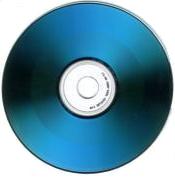| |
|
|
| |
Introduction to CD-Rs
|
A CD-R must imitate the bumps and flat areas of a standard
CD and be writeable by the drive. It is very difficult
to try to develop bumps
in the reflective layer to deflect the incoming light
so a different method of creating non-reflective areas
must be used.
|
|
 |
As with the standard CD, light reflected back into the
source registers a binary 1 but in a CD-R a dye is used
to absorb the light so that a binary 0 is read. Placing
a photosensitive, translucent dye between the reflective
layer and the laser provides a simple route to recording
the required sequence of data. A powerful laser will discolour
the dye leaving an opaque mark which can then be read
by any standard CD player. |
|
|
|
|
|